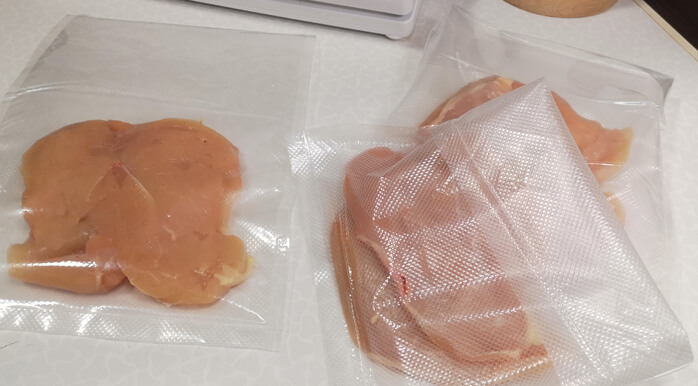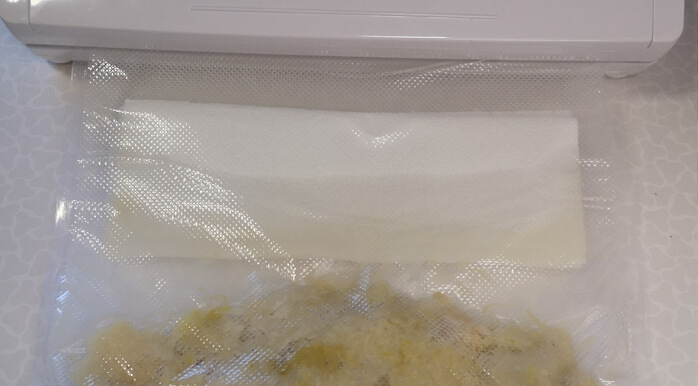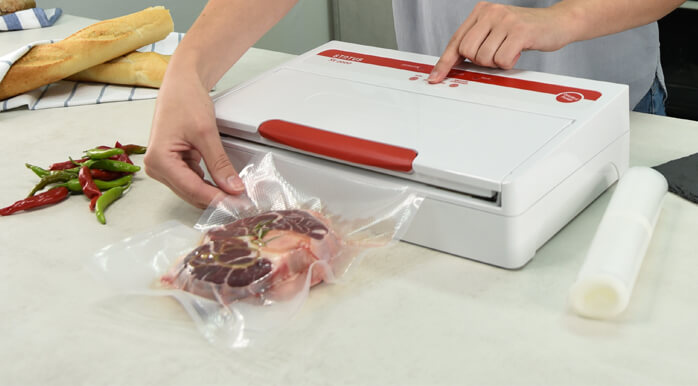Tips and tricks for storing food in vacuum bags
You invested in a vacuum sealer, but you are experiencing troubleshooting? Read our tips and tricks for vacuum packing food in vacuum bags.
-
PROBLEM 1: The machine does not vacuum seal the bag
The first step is to check the seal on the bag – is it smooth? Is the bag evenly fused through the whole seal? If you are having trouble with the correct placement of the bag in the sealer, we recommend installing Status Stiki adhesive tape.
If the vacuum sealer doesn’t seal the bag properly at the end of the vacuum sealing process or the vacuum releases moments after vacuum packing, the problem is mainly in low-quality bags or dirty (greasy) bags, or the sealing strip hasn’t been warmed beforehand.
TIP:
We recommend the use of Status vacuum bags and sealers for effortless food storage without any inconvenience. The problem with thinner and lower quality bags is that the sealing strip can be too hot and they melt before the sufficient vacuum is achieved inside the bag. High-quality products, made in Slovenia, EU ensure top-quality food storage. For detailed information about the superior quality of Status vacuum bags, read the blog post “How to choose the right food vacuum bags?“.
If you are experiencing troubleshooting even though you are already using Status vacuum bags, be more careful when putting foods in the bag; especially greasy dried meat, moist fresh meat, and fruit and vegetables. When vacuum packing greasy products (especially bacon) it is strongly recommended you reverse the outside edges of the bag, put the item inside and reverse the edges back again. This keeps the sealing area clean. For additional security when vacuum packing moist foods, wipe the inside of the bag before vacuum sealing.
If the problems occur during the beginning cycles of vacuum packing or after a long break, we recommend additional warm-up of the machine by dry running it without a bag.

-
PROBLEM 2: The machine has sucked in liquid
It is important you use a manual vacuum packing function when storing fruits and (blanched) vegetables. You must also observe the movement of the liquid in the bag. If the machine sucks in liquid despite your precaution, use these tips and tricks for quality storing moist foods.
TIP:
There are three tricks you can use separately or together. When packing fresh meat, sauerkraut, and similar, place a paper towel in the bag between the food item and the sealing area. A paper towel will absorb the liquid and prevent it from entering the sealer.

The second tip for preventing liquid from foods to enter the vacuum sealer is slightly (1-2 hours) freezing the food beforehand. This method is especially recommended when vacuum packing delicate foods like berries, bread, and cake. This method also prevents the deformation and sticking of the foods during freezing.
The third way of ensuring safe vacuum packing of the moist foods is by using an additional PE food bag inside the vacuum bag. This way you will also keep the vacuum bag clean and use it multiple times.
Place the food in the PE freezer bag and wrap the remaining edge of the bag around the food item. Insert the package in the vacuum bag and vacuum pack with a manual vacuum function. Observe the liquid – you will notice it needs a lot more time to approach the machine than before.

-
PROBLEM 3: You would like to vacuum pack liquids
If you want to vacuum pack soup or sauce for freezing in bags, you need to use the following technique. Freeze the liquid in the container of the appropriate shape (we recommend in the portions suitable for further use) and then vacuum seal the frozen blocks in the bags.
Or you can simply use vacuum containers for freezing liquid foods.
We hope our Tips and tricks for vacuum packing food in vacuum bags helped you resolve your issues with vacuum packing. If you are experiencing any other troubleshooting with vacuum packing, let us know below in the comments. We will be happy to help.


